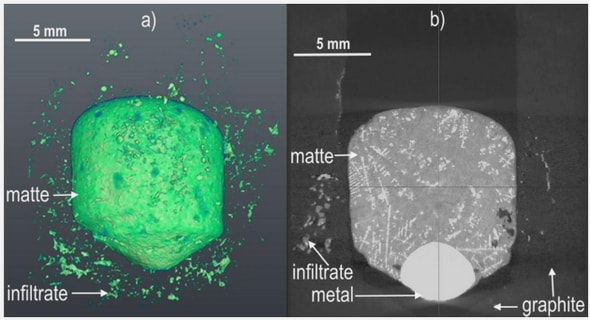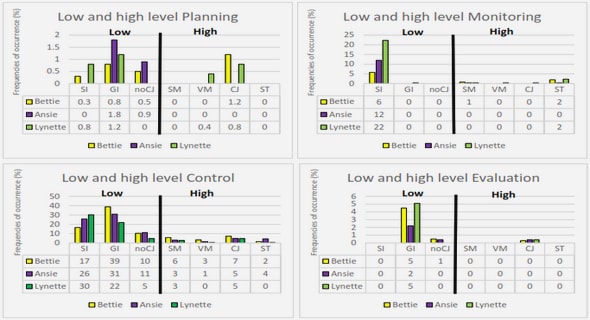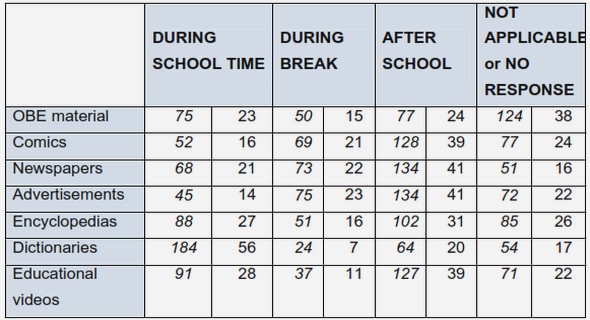Get Complete Project Material File(s) Now! »
CHAPTER 3 RESEARCH DESIGN AND METHODOLOGY
INTRODUCTION
The rationale and logic relating to the utilisation of the qualitative data collection and analysis techniques is premised on its capacity and potential to afford the researcher the opportunity to be more interactive with the data generating process. Once set up (the qualitative process), the research proceeds more according to a predetermined plan (Bouma & Rod Ling 2010:166). For instance, in-depth interviewing allowed for the research subjects’ un-impeded ‘freedom’ to relate their stories, their experiences, their perceptions and their true feelings to the researcher. However, a qualitative research allows more continuous reflection on the research, and there is usually more room for ongoing alteration as the research proceeds. In the context of this study, the research methodology relates to the more specific means employed to implement the desired outcomes of the study. Both the research design and research methodology were helpful in achieving the objectives and the evidence on which the findings and recommendations would be acted on.
RESEARCH PURPOSE
The purpose of this study is to determine the availability and accessibility of the PMTCT programme in the Bojanala Health District of the North West Province, the rationale being to develop strategies to facilitate such availability and accessibility of the PMTCT programme to HIV-positive pregnant women in the area specifically.
Research objectives
For purposes of integrating and aligning the research problem to the broad intentions of the study, the objectives (specific intentions) of the current study have been articulated as follows:
In conjunction with the study’s purpose, the more specific intentions (objectives) of the current study are to:
- Explore and describe the experiences of HIV-positive pregnant women in the Bojanala Health District in respect of the availability and accessibility of the PMTCT programme.
- Explore and describe the experiences of Health Care Workers with regard to the availability and accessibility of the PMTCT programme in the Bojanala Health District.
- Develop and describe the conceptual framework for facilitation of the availability and accessibility of the PMTCT programme.
- Develop strategies to facilitate the availability and accessibility of the PMTCT programme and formulate recommendations for the Bojanala Health District.
- Validate the developed strategies based on the conceptual framework.
Overall research questions
The most pertinent research questions in the current study have been articulated thus:
- How available and accessible is the PMTCT programme in Bojanala Health District of the North West Province?
- What strategies can be developed to facilitate the availability and accessibility of the PMTCT programme in Bojanala Health District of the North West Province?
Specific research questions
In tandem with the overall research question above, the following specific research questions have an inextricable affinity with the more specific intentions of the study:
- What are the experiences of HIV-positive pregnant women with regards to the availability and accessibility of the PMTCT programme in Bojanala Health District?
- What are the experiences of Health Care Workers with regards to the availability and accessibility of the PMTCT programme in Bojanala Health District?
- How should strategies be developed to facilitate the availability and accessibility of the PMTCT programme in the Bojanala Health District?
- How should strategies based on the conceptual framework be validated?
RESEARCH DESIGN AND METHOD
The study assumes a qualitative, exploratory, descriptive, and contextual research design. All these research aspects were intended to enable the researcher gain better understanding of the participants’ perspectives and experiences during the data collection phase. Research methods are techniques researchers used to structure the study and to gather and analyse information relevant to the resrach question (Polit & Beck 2012:12).
Qualitative research
A qualitative research paradigm seeks to assist the researcher to describe and understand events, actions and processes in a natural context in which they occur (Creswell 2009:195). Grove et al (2013:87) further indicates that the problems formulated for qualitative research identify an area of concern that requires investigation. The purpose of a qualitative research indicates the focus of the study – whether it is a subjective concept, an event, a phenomenon, experience, situation, or a facet of a culture or society (Marshall & Rossman 2011:45). In the context of this study, the researcher was a key instrument. The researcher collected data herself by conducting the interviews and the FGDs with the participants. The interview guides were just used for guidance and the research assistant recorded the interviews and the FGDs.
Exploratory research
An exploratory research design is often used in the context of limited knowledge and understanding on the subject being studied. During the data collection period, the researcher attempted to gather new information and gains insight into this subject by exploring the experiences of Health Care Workers and the experiences of HIV-positive pregnant women with regard to the availability and accessibility of the PMTCT programme (Polit & Beck 2012:18).
Consequently the exploratory component rather than observing and describing, goes further to investigate the full nature of the phenomenon, the manner which it occurs and related contributing factors and to determine if there are any interesting extremes in the data (Polit & Beck 2008:19, 20). Using the demographic data assisted in having more knowledge about the participants and getting more information which had an impact on the findings.
Descriptive research
An exploratory-descriptive qualitative researcher often indicates that a study is needed for a specific population, in order to understand the needs, the desired outcomes, or the views and appropriate interventions for the members of the particular group. The goal is to create a programme or an intervention to benefit the population. Exploratory-descriptive qualitative researchers identify a specific lack of knowledge that could be addressed only through seeking the viewpoints of the people most affected (Babbie 2008:97; Polit & Beck 2012:18). In the context of this study, a descriptive research assisted the researcher to obtain better understanding of the HIV-positive pregnant women’s and Health Care Workers’ experiences with regard to the availability and accessibility of the PMTCT programme.
Contextual research
The strategy of this research is contextual in nature (Mouton 2001:55). This orientation relates to the specific context of the Madibeng sub-district within the Bojanala Health District and its three clusters (Bapong, Ikhutseng and Jericho), from where the participants were recruited to participate in the study. Thus, the researcher aims to provide a description and exploration of the experiences of HIV-positive pregnant women and Health Care Workers with regard to the availability and accessibility of the PMTCT programme within this specific context.
Phase 1: Exploration and description of the experiences of both HIV-positive pregnant women and Health Care Workers with regards to the availability and accessibility of the PMTCT programme in Bojanala Health District
This phase is described in terms of the research setting, the research population and sampling criteria, data collection and data analysis.
Research setting
The research setting refers to the physical location and conditions under which the data collection takes place in the study (Polit & Beck 2012:49). This study was conducted in three clusters called Bapong, Ikhutseng and Jericho of Madibeng Health sub-district of Bojanala Health District in the North West Province. The choice of the sub-district was influenced by the fact that the clusters were situated in the mining, farming and rural sites where there were many HIV-positive pregnant women enrolled in the PMTCT programme. Another reason for choosing Madibeng Health sub-district was that the clinics are far apart from the farms, mines, other villages and even from the district hospital. Only few villages have clinics and most of the HIV-positive pregnant women depend on the five (5) mobile clinics that visit the mobile points almost once a month to render the PMTCT programme services.
Population
A research refers to the entire set (universe) of individuals or objects having some common characteristics that are of interest to the researcher (Polit & Beck 2012:738; Brink 2006:206; Grove et al 2013:44). In this study, the target population consisted of ten (10) HIV-positive pregnant women enrolled in the PMTCT programme and (21) Health Care Workers rendering PMTCT services at Madibeng Health sub-district.
Sample criteria
Purposive sampling was used for the study as it involved the conscious selection of certain subjects, elements, events or incidents (Polit & Beck 2008:343). Accordingly, participants were selected on the basis that the researcher considered them to be typical of a wider population. HIV-positive pregnant women and Health Care Workers were purposively selected on the basis of their experiences about the availability and accessibility of the PMTCT programme in respect of the research setting. In general, the selection process of the participants was based on the researcher’s personal judgement concerning who were the most representative and also most productive.
The researcher contacted the operational nurse managers of the three clusters to identify the HIV-positive pregnant women in their third trimesters who were enrolled in the PMTCT programme. The researcher went to the clinics on the days of the return dates of the HIV-positive pregnant women in their third trimesters. The researcher selected the HIV-positive pregnant women whom the Health Care Workers were done with their ANC follow-up check-ups prior leaving the clinics. The researcher was assisted by the Health Care Workers allocated for ANC to identify the HIV-positive pregnant women. The researcher only interviewed participants who were willing to take part in this study.
The researcher also contacted the operational nurse managers of the three clusters to act as mediators and provide the researcher with a list of the Health Care Workers who would be research participants. The researcher together with the operational nurse managers arranged appointments for the FGDs which were conducted during the second lunch times except for one which was conducted in the morning. The Health Care Workers were also selected by the researcher with the help of the three PMTCT programme operational nurse managers. The researcher selected the Health Care Workers based on their experiences with regard to availability and accessibility of the PMTCT programme. The researcher went to the clinics on the days whereby most of the Health Care Workers were working full day shifts. Rapport was build prior data collection.
The number of participants was also determined in accordance with the criterion of saturation of information. This is the point in the study according to which the researcher began to hear the same information repeatedly being reported and she no longer learned anything new (Babbie 2007:305). Ten (10) HIV-positive pregnant women were interviewed, while twenty one (21) Health Care Workers participated in the FGDs. These sample sizes were advantageous in that they allowed for every participant’ optimum involvement and maximum elicitation of responses.The criteria for inclusion are stated below
Inclusion criteria for HIV-positive pregnant women
Only HIV-positive pregnant women fitting the following categories were selected for inclusion as participants:
- Those between 18 and 49 years of age.
- Those in their third trimester of pregnancy.
- Those enrolled in the PMTCT programme in the Madibeng Health sub-district.
- Those willing to participate in sharing their experiences about the availability and accessibility of the PMTCT programme.
- Those residing within the Bapong, Ikhutseng or Jericho clusters.
- Those who understood the language in which the interview is conducted (Setswana).
- Those who were regularly booked ante-natal clinic attendees; this was checked on ANC cards.
Inclusion criteria for Health Care Workers
Only Health Care Workers fitting the following categories were selected for inclusion as participants:
- Those working in the public health care facilities of Madibeng Health sub-district.
- Those having at least 2-3 years of working experience in the PMTCT programme.
- Those willing to participate in sharing their experiences about the availability and accessibility of the PMTCT programme.
- Those registered with a professional bodies-South African Nursing Council (SANC) and Health Professional Council of South Africa (HPCSA).
Sample size
The minimum sample sizes depended on the data collection method for the different steps in Phase 1 and data saturation. According to Polit and Beck (2012:521), there are no rules for sampling size in qualitative research. Data saturation guided the number of participants included in the study. Therefore, the sample size was determined by the saturation of information during data collection (Brink 2006:134) as the scope of the study was limited to the experiences of both the HIV-positive pregnant women and the Health Care Workers with regards to the availability and accessibility of the PMTCT programme.
Data collection
Data collection is the precise and systematic gathering of information relevant to a research problem using data collection instruments which could be in the form of questionnaires, interview schedules and guides, field notes and records and /or artefacts (Grove et al 2013:691). Data were collected using semi-structured individual interviews and the FGDs. The interviews were recorded with a digital voice recorder, and field notes were also recorded manually and transcribed. The central questions were asked and explored further by using the probing questions in the guides (see Appendices F and I). Informed consent was obtained from participants regarding their voluntary and audio-recorded participation in this study. The data collection method is discussed under the following headings: Semi-structured interviews, focus group discussions and field notes.
Semi-structured individual interviews (IDIs)
Semi-structured IDIs were conducted with the HIV-positive pregnant women regarding their experiences on the availability and accessibility of the PMTCT programme in the Madibeng sub-district. According to Botma et al (2010:208), semi-structured interviews are used to gain a detailed picture of a participant’s beliefs, perceptions, or account of a particular topic. An interview guide with predetermined open-ended questions was used by the researcher to guide in the facilitation of the interviews. The interviews were conducted in Setswana, the predominant language in Bojanala. The researcher, who is herself a midwife and public health officer with a thorough knowledge of Setswana, conducted the audio-recorded interviews; each lasted between 30 and 60 minutes. Data were collected to the point of saturation. The most perennial question asked to the HIV-positive pregnant women during semi-structured interviews was: “Tell me about your experiences of the availability and accessibility of the PMTCT programme”.
Focus group discussions (FGDs)
According to De Vos et al (2011:360), FGDs are group interviews. FGDs are also a means of better understanding people’s feelings or thoughts concerning an issue, product or service. Participants are selected because they have certain characteristics in common that relate to the topic of the focus group. The group is “focused” in that it involves some kind of collective activity. The researcher created an environment that encouraged participants to share perceptions, points of view, experiences, wishes and concerns without pressurising participants to vote or reach consensus in the focus group. The researcher guided the discussions, while a small group discussed the topics that the facilitator raised. In focus groups, the participants’ actual statements during the discussions constituted the essential data.
In this study, the focus groups were conducted with the Health Care Workers regarding their experiences in the context of their involvement in the rendering of PMTCT programme services. Each focus group lasted between 30 and 60 minutes. Lunch hours were utilised for the FGDs in order to accommodate the required number of participants. The central question asked was: “Tell me about your experiences of the availability and accessibility of the PMTCT programme”. Data was collected in the FGDs until the discussion reached saturation and repetitive themes emerge
CHAPTER 1 ORIENTATION TO THE STUDY
1.1 INTRODUCTION
1.2 BACKGROUND INFORMATION ABOUT THE RESEARCH PROBLEM
1.3 STATEMENT OF THE RESEARCH PROBLEM
1.4 RESEARCH PURPOSE
1.5 SIGNIFICANCE OF THE STUDY
1.6 DEFINITION OF TERMS
1.7 THEORETICAL FOUNDATIONS OF THE STUDY
1.8 RESEARCH DESIGN AND METHOD
1.9 SCOPE OF THE STUDY
1.10 MEASURES TO ENSURE TRUSTWORTHINESS
1.11 ETHICAL CONSIDERATIONS
1.12 STRUCTURE OF THE THESIS
CHAPTER 2 OVERVIEW OF THE PMTCT PROGRAMME IN SOUTH AFRICA
2.1 INTRODUCTION
2.2 PERPECTIVES OF THE PMTCT PROGRAMME’S AVAILABILITY AND ACCESSIBILITY
2.3 SOUTH AFRICA’S NEW HIGHLY EFFECTIVE PMTCT PROGRAMME GUIDELINES
2.4 INTEGRATION OF THE PMTCT PROGRAMME AND MATERNAL NEONATAL CHILD WOMEN HEALTH (MNCWH) SERVICES
2.5 THE NORTH WEST PROVINCE’S (NWP’S) EXPERIENCES OF THE PMTCT PROGRAMME
2.6 RESOURCES THAT AFFECT THE PMTCT PROGRAMME’S AVAILABILITY AND ACCESSIBILITY
2.7 CONCLUSION
CHAPTER 3 RESEARCH DESIGN AND METHODOLOGY
3.1 INTRODUCTION
3.2 RESEARCH PURPOSE
3.3 RESEARCH DESIGN AND METHOD
3.4 DATA COLLECTION PROCESS
3.5 PRE-TEST STUDY
3.6 MEASURES TO ENSURE TRUSTWORTHINESS
3.7 ETHICAL CONSIDERATIONS
3.8 CONCLUSION
CHAPTER 4 DISCUSSION OF FINDINGS AND LITERATURE CONTROL
4.1 INTRODUCTION
4.2 SAMPLE DESCRIPTION PER HEALTH CLUSTERS
4.3 QUALITATIVE DATA ANALYSIS
4.4 SUMMARY OF THE FINDINGS
4.5 DISCUSSION OF THE MAIN THEMES (HIV-POSITIVE PREGNANT WOMEN)
4.6 THEMES, CATEGORIES AND SUB-CATEGORIES ACCRUING FROM HIV-POSITIVE
PREGNANT WOMEN’S DATA ANLYSIS
4.7 DISCUSSION OF MAIN THEMES (HEALTH CARE WORKERS)
4.8 THEMES, CATEGORIES AND SUB-CATEGORIES ACCRUING FROM HEALTH CARE WORKERS’ DATA ANALYSIS
4.9 CONCLUSION
CHAPTER 5 A CONCEPTUAL FRAMEWORK FOR THE FACILITATION OF PMTCT STRATEGIES
5.1 INTRODUCTION
5.2 CONCEPTUAL FRAMEWORK
5.3 THE QUALITY HEALTH OUTCOMES MODEL (QHOM)
5.4 THE SURVEY LIST OF DICKOFF, JAMES AND WIEDENBACH
5.5 DESCRIPTION OF THE CONCEPTUAL FRAMEWORK USING QHOM AND SURVEY LIST
5.6 BRIEF DESCRIPTION OF THE DEVELOPED CONCEPTUAL FRAMEWORK
5.7 CONCLUSION
CHAPTER 6 STRATEGIES FOR FACILITATION OF THE AVAILABILITY AND ACCESSIBILITY OF THE PMTCT PROGRAMME FOR HIV- POSITIVE PREGNANT WOMEN
6.1 INTRODUCTION
6.2 STRATEGIES FOR FACILITATION OF THE AVAILABILITY AND ACCESSIBILITY OF THE PMTCT PROGRAMME
6.3 DEVELOPMENT OF THE STRATEGIES
6.4 DESCRIPTION OF THE STRATEGIES
6.5 STRATEGIES TO FACILITATE THE AVAILABILITY AND ACCESSIBILITY OF THE PMTCT
PROGRAMME
6.6 DESCRIPTION OF THE EVALUATED STRATEGIES
6.7 REVIEW OF THE STRATEGIES
6.8 CONLCUSION
CHAPTER 7 CONCLUSIONS AND RECOMMENDATIONS
7.1 INTRODUCTION
7.2 OVERVIEW OF THE STUDY
7.3 GENERAL CONCLUSIONS
7.4 RECOMMENDATIONS
7.5 CONTRIBUTIONS OF THE STUDY
7.6 LIMITATIONS OF THE STUDY
7.7 CONCLUDING REMARKS
7.8 PERSONAL REFLECTION
REFERENCE LIST
GET THE COMPLETE PROJECT


